Hello! Today’s recipe is Refreshing Yukgaejang. It’s great to cook once and enjoy as a meal with rice, or to divide and enjoy as a soup dish. Like most Yukgaejang, it has a spicy and refreshing taste as its base, and you can enjoy it deliciously even with a simple composition. It’s surprisingly easy to make. Let’s find out what the recipe is.

ⓒ
Copyright PAKOC https://pakoc.netIngredient Description
First, let’s look at the ingredients! Of course, beef is needed for Yukgaejang, and for vegetables, we mainly prepared radish, bean sprouts, bracken, and green onions, which you might associate with Yukgaejang. If you need anything additional, feel free to prepare more!
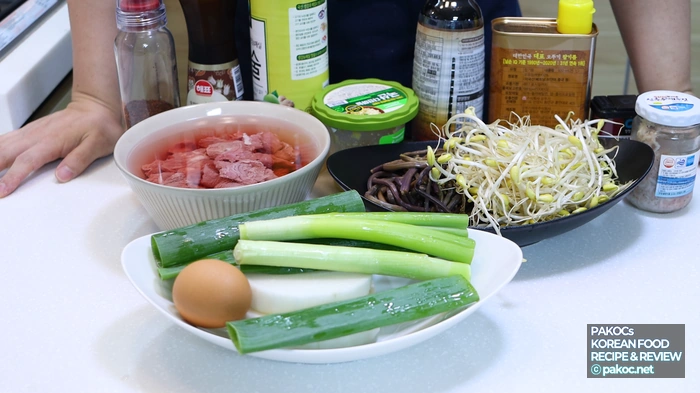
ⓒ
Copyright PAKOC https://pakoc.net[Refreshing Yukgaejang for 4 servings]
- 300g beef for soup
- 150g bracken, 200g radish prepared
- Two to three handfuls of bean sprouts, two stalks of green onions
- 1.2 liters (6 cups) of water
- 1 egg
- 1 tablespoon perilla oil, 1 tablespoon minced garlic
- 1 tablespoon sesame oil, 3 tablespoons soy sauce for soup
- 1 teaspoon pepper, 3 tablespoons red pepper powder
- 1 tablespoon shrimp sauce, 1/2 tablespoon flavored salt
- 1 tablespoon cooking wine
Prepare about 200g of radish based on the middle part, cut into two to three finger-width thickness, and prepare about 2-3 handfuls of bean sprouts. Recently, bracken is sold pre-prepared in supermarkets, so I used 150g. The most cumbersome part of preparing Yukgaejang is trimming the bracken, but using pre-prepared bracken makes cooking convenient.
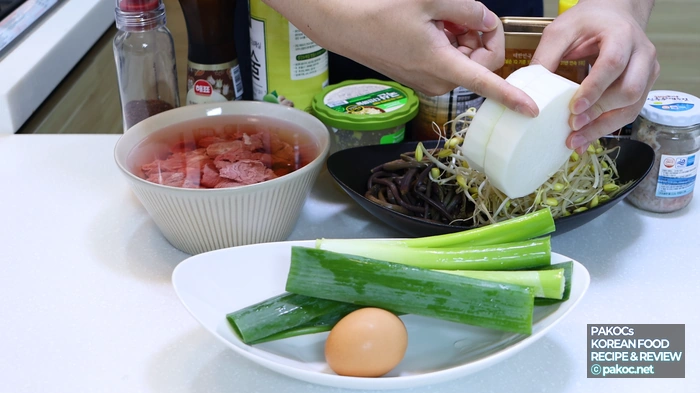
ⓒ
Copyright PAKOC https://pakoc.net
ⓒ
Copyright PAKOC https://pakoc.netRecipe Overview
- Soak the beef for soup in cold water to slightly remove the blood.
- Wash the prepared bracken well under running water. If using fresh bracken, trim and blanch it in hot water before use.
- Wash the bean sprouts once under running water and remove the husks.
- Cut the green onions into long pieces about 4-5cm long, and slice the radish into thin slices.
- In a suitable pot, add 1 tablespoon of perilla oil and the beef for soup with the blood slightly removed, then stir-fry over low-medium heat.
- Add the bracken, green onions, and radish with the moisture completely removed, then add 1 tablespoon minced garlic, 1 tablespoon sesame oil, 3 tablespoons soy sauce for soup, 1 teaspoon pepper, and 3 tablespoons red pepper powder, and stir-fry over medium heat.
- Add 1-1.2L (6 cups) of water and 1 tablespoon of shrimp sauce to the stir-fried ingredients and bring to a boil. If a lot of foam rises, skim it off in the middle.
- Add slightly less than 1/2 tablespoon of flavored salt and 1 tablespoon of cooking wine, check the seasoning, and beat 1 egg into it. Add the bean sprouts at the end and bring to a boil briefly to prevent them from becoming too soft.
👨🍳 You can enjoy a refreshing taste by adding mung bean sprouts, so try using them instead of bean sprouts.
🍴 If you want to enjoy crunchy bean sprouts, blanch them slightly and add them at the end when boiling the soup to cook them with the heat of the soup.
🥗 Ingredient preparation time: 20 minutes
🍳 Cooking time: 30 to 40 minutes
Preparing Ingredients
First, wash the prepared bracken clean under running water, and rinse the bean sprouts once and remove the husks. Soak 300g of beef for soup in cold water for 15-20 minutes to slightly remove the blood.

ⓒ
Copyright PAKOC https://pakoc.netPrepare 200g of radish by slicing it into bite-sized pieces! Cut 2 green onions into 4-5cm lengths. I cut them a bit long, but you can prepare them according to your personal preference.
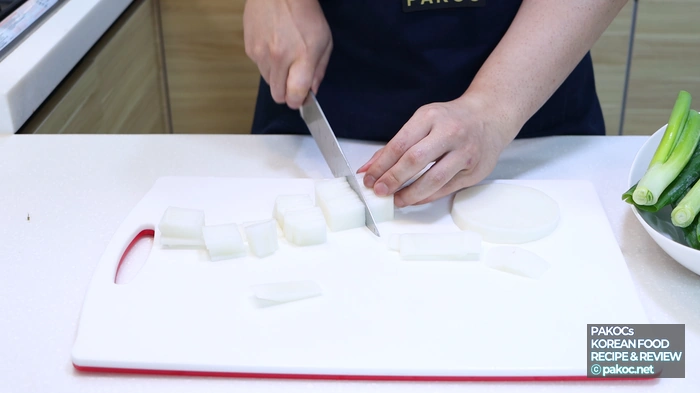
ⓒ
Copyright PAKOC https://pakoc.net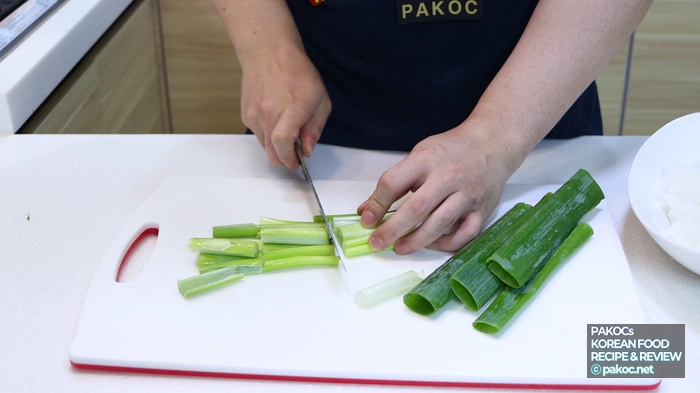
ⓒ
Copyright PAKOC https://pakoc.netCut the beef with the blood removed into appropriate sizes. If the meat is a bit thick, you can gently pound it to make it tender!
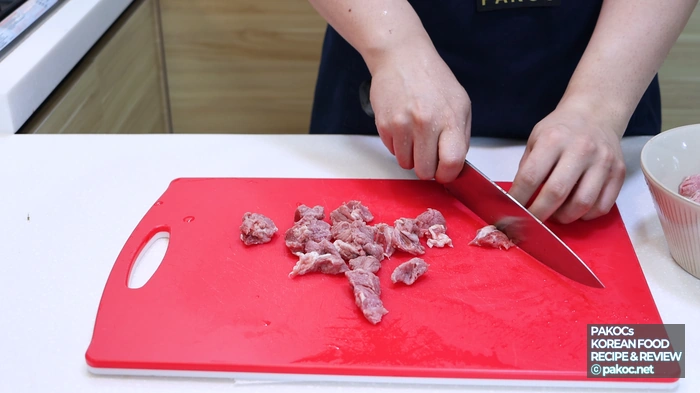
ⓒ
Copyright PAKOC https://pakoc.netNow the ingredient preparation is complete. Prepare the green onions, radish, bean sprouts, bracken, and beef separately.

ⓒ
Copyright PAKOC https://pakoc.netCooking
Prepare a pot of suitable size that can hold about 1.2L of water generously. Add 1 tablespoon of perilla oil over low-medium heat, and stir-fry the beef for soup with the blood slightly removed.
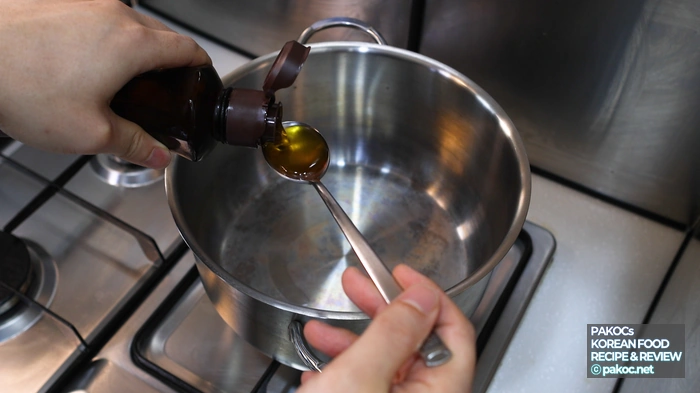
ⓒ
Copyright PAKOC https://pakoc.net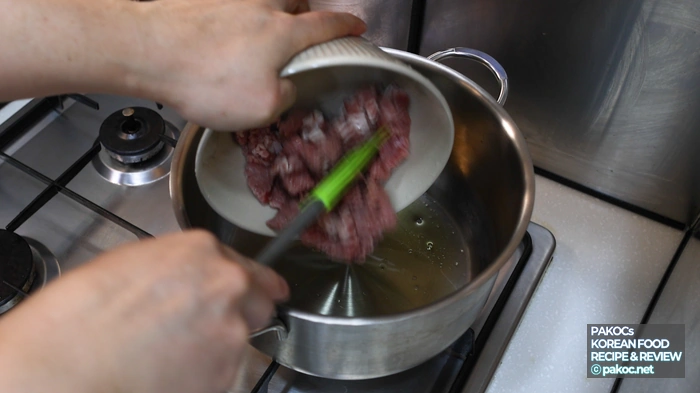
ⓒ
Copyright PAKOC https://pakoc.netThere is no need to over-fry the beef, and since perilla oil can burn easily, stir-fry it over low heat while continuously stirring. Stir-fry until the beef is somewhat cooked and the meat juices come out!
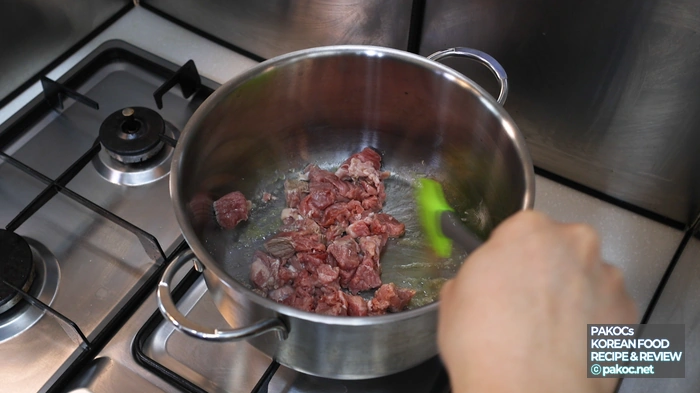
ⓒ
Copyright PAKOC https://pakoc.net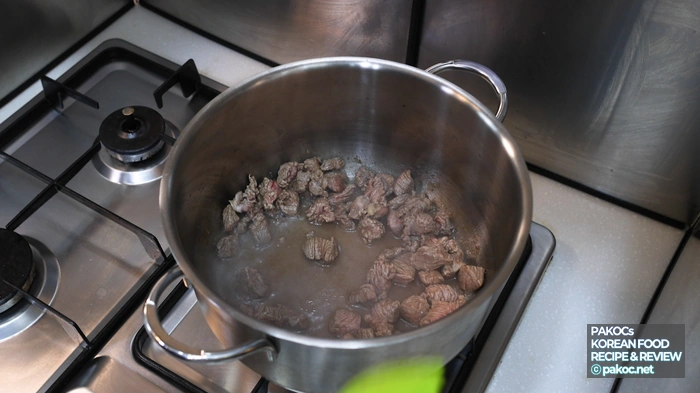
ⓒ
Copyright PAKOC https://pakoc.netNext, add the bracken, green onions, and radish with the moisture completely removed. Add a little more seasoning over low heat and stir-fry!

ⓒ
Copyright PAKOC https://pakoc.netFor seasoning, add 1 tablespoon minced garlic, 1 tablespoon sesame oil, 3 tablespoons soy sauce for soup, 1 teaspoon pepper, and 3 tablespoons red pepper powder.
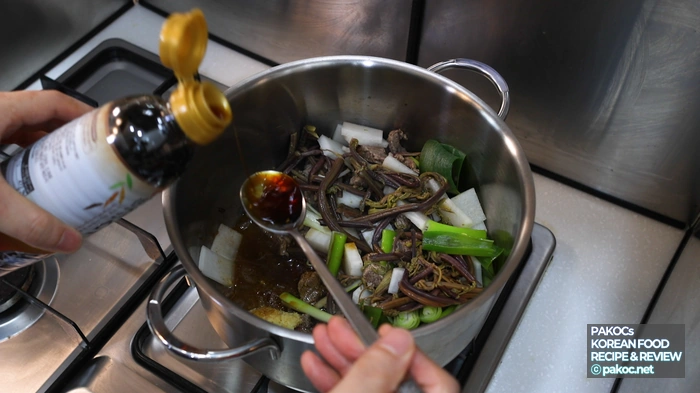
ⓒ
Copyright PAKOC https://pakoc.net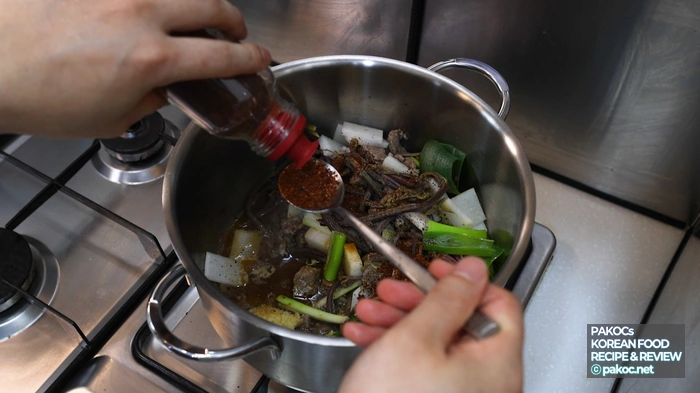
ⓒ
Copyright PAKOC https://pakoc.netMix the ingredients evenly with the vegetables, then adjust the heat to medium and stir-fry so that the seasoning is well absorbed into the ingredients. Stir-fry for about 3-5 minutes over medium heat, which should be sufficient.

ⓒ
Copyright PAKOC https://pakoc.netPour 1-1.2L (6 cups) of water into the stir-fried ingredients, add 1 tablespoon of shrimp sauce, and bring to a boil. If a lot of foam forms, you can skim it off in the middle. Since the blood has already been removed, not much foam will form. Check the seasoning of the soup!
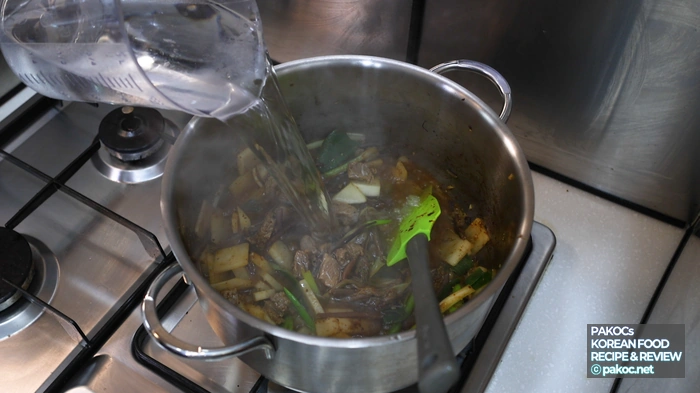
ⓒ
Copyright PAKOC https://pakoc.net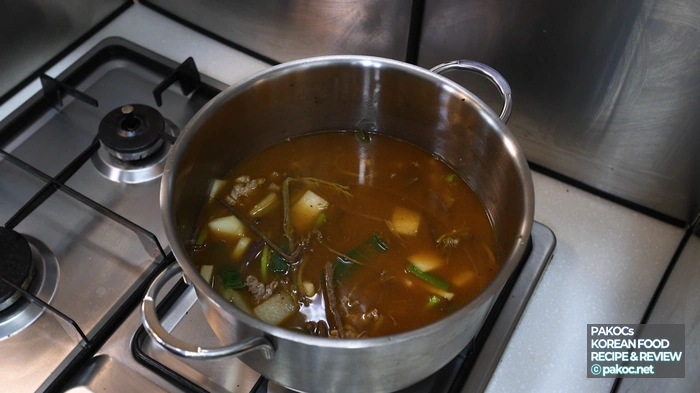
ⓒ
Copyright PAKOC https://pakoc.net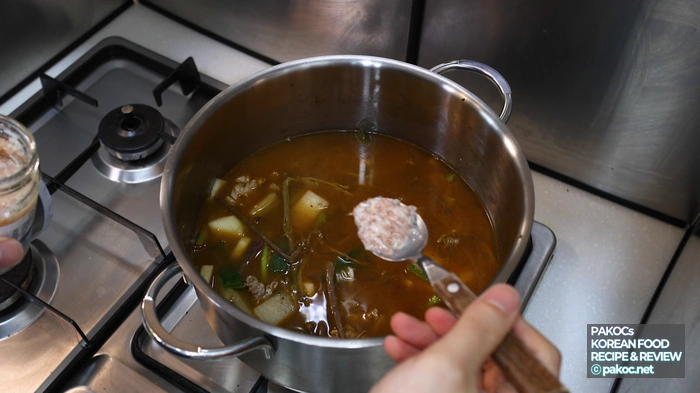
ⓒ
Copyright PAKOC https://pakoc.net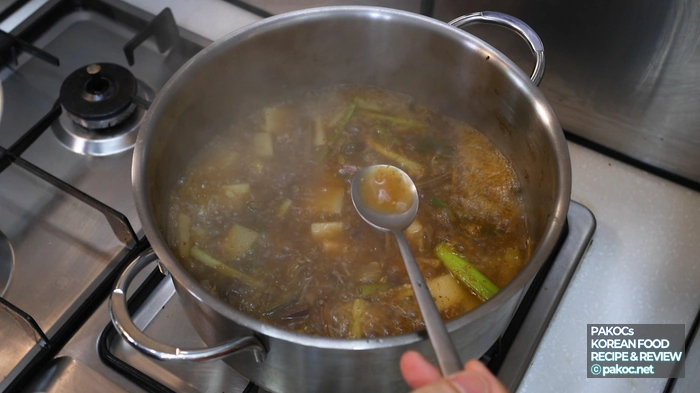
ⓒ
Copyright PAKOC https://pakoc.netFinally, add less than 1/2 tablespoon of flavored salt and 1 tablespoon of cooking wine, then check the seasoning. Finally, beat 1 egg into it!
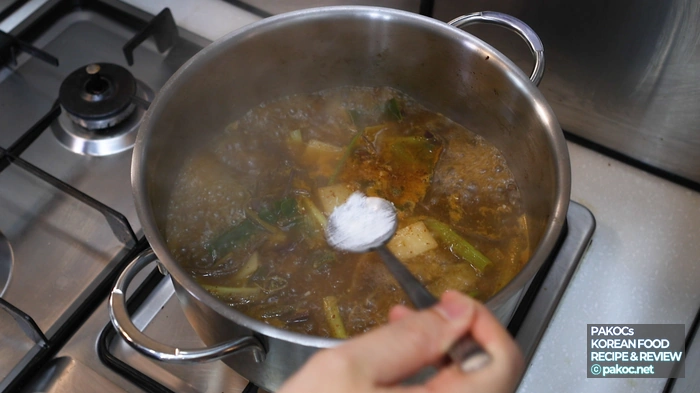
ⓒ
Copyright PAKOC https://pakoc.net
ⓒ
Copyright PAKOC https://pakoc.netIn the final step, add the bean sprouts and boil briefly, but do not let them become too soft! Of course, you can adjust the texture of the bean sprouts according to your personal preference!
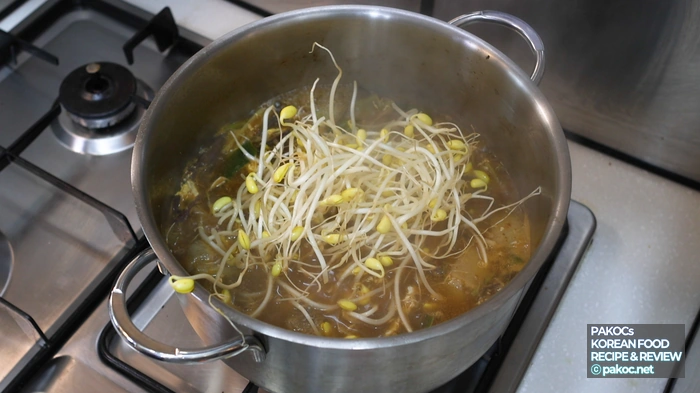
ⓒ
Copyright PAKOC https://pakoc.net
ⓒ
Copyright PAKOC https://pakoc.netThe cooked Yukgaejang can be served by mixing the bean sprouts and various ingredients well.
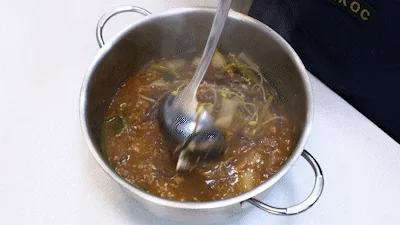
ⓒ
Copyright PAKOC https://pakoc.netI served it in a large earthenware pot to have a generous amount of rice that evening. It generally yields about three to four bowls, so it’s enough for one or two people to enjoy.
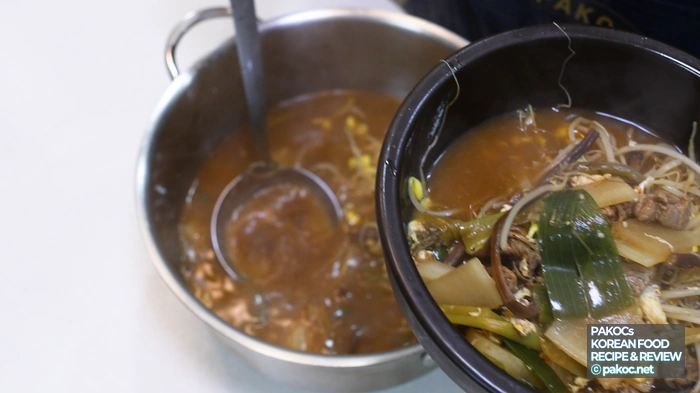
ⓒ
Copyright PAKOC https://pakoc.net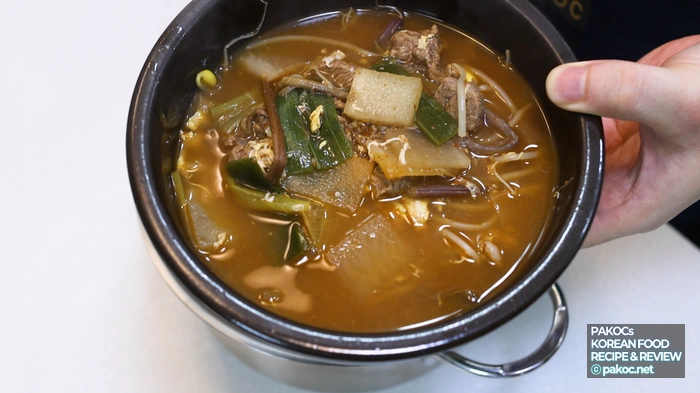
ⓒ
Copyright PAKOC https://pakoc.netGallery Completion
Completion
Now, let me introduce the completed refreshing Yukgaejang. This homemade Yukgaejang is relatively clear as it does not use chili oil. However, if you add a little chili oil to your liking, you can enjoy it with the charm of a store style.

ⓒ
Copyright PAKOC https://pakoc.netOf course, it tastes quite good even as it is, and it’s not overly stimulating or salty, making it suitable for a meal without burden.
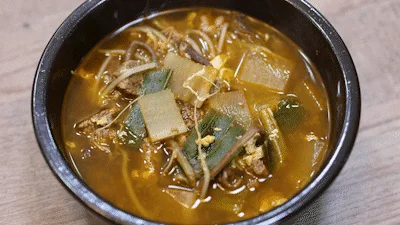
ⓒ
Copyright PAKOC https://pakoc.net
ⓒ
Copyright PAKOC https://pakoc.netIt includes a variety of vegetables, making it a good menu to consume fiber-richly. How about making it yourself for a meal?
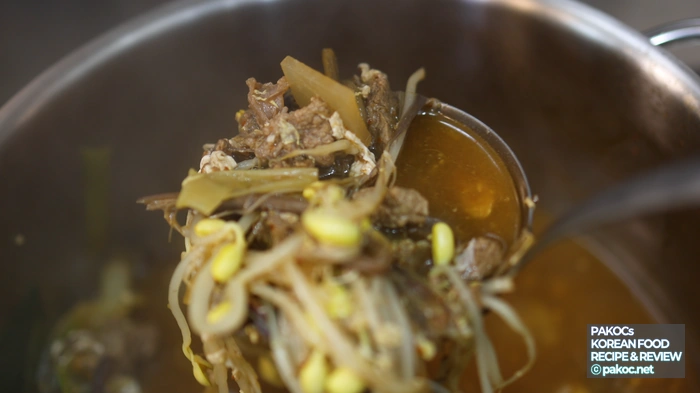
ⓒ
Copyright PAKOC https://pakoc.net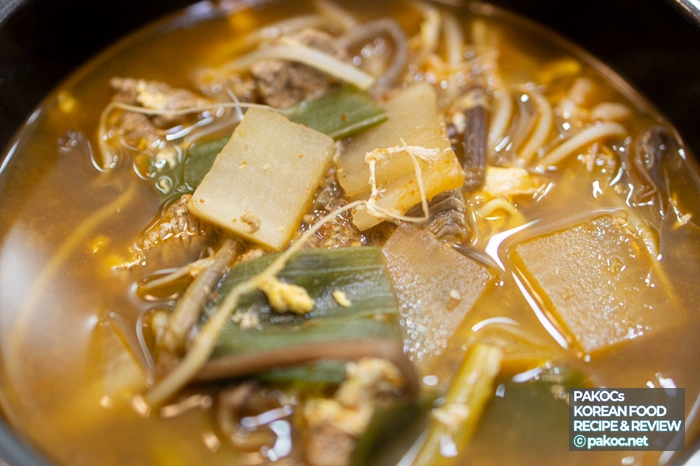
ⓒ
Copyright PAKOC https://pakoc.netI usually prefer to eat the vegetable chunks first and then mix the rice. So I first tasted the vegetable chunks and then enjoyed the refreshing soup together. It definitely felt like a homemade recipe, offering a different charm from dining out.
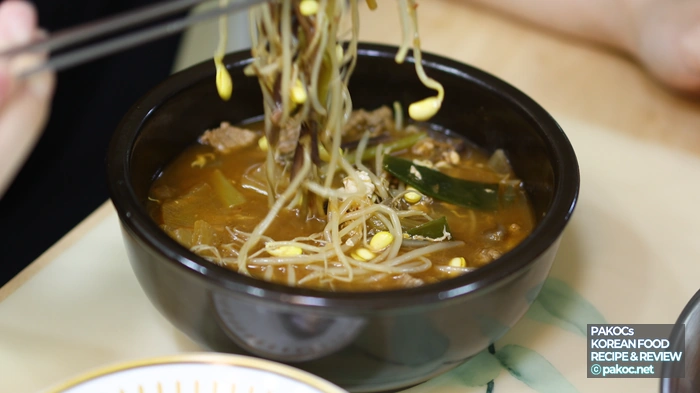
ⓒ
Copyright PAKOC https://pakoc.netEveryone, how about choosing refreshing and simple Yukgaejang as a menu for dinner or when you need soup? You won’t regret the taste.
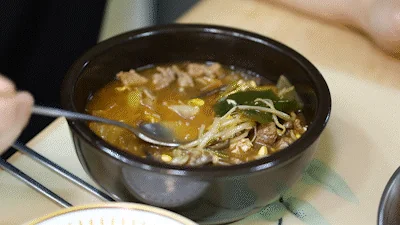
ⓒ
Copyright PAKOC https://pakoc.net
ⓒ
Copyright PAKOC https://pakoc.netYouTube Video
image sources
- 계란 넣기 조리 과정: Copyright PAKOC https://pakoc.net
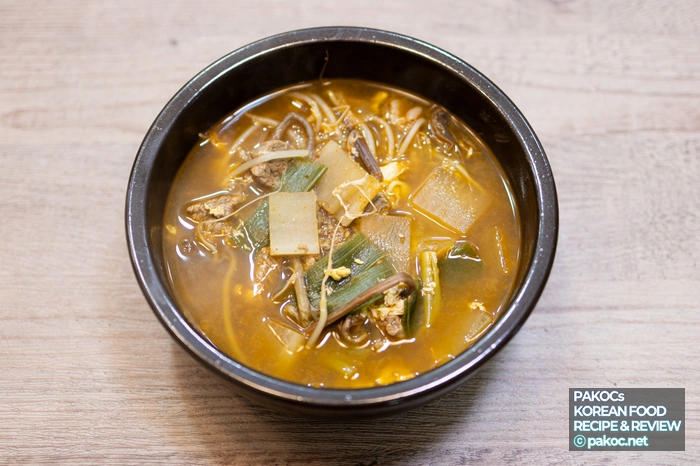
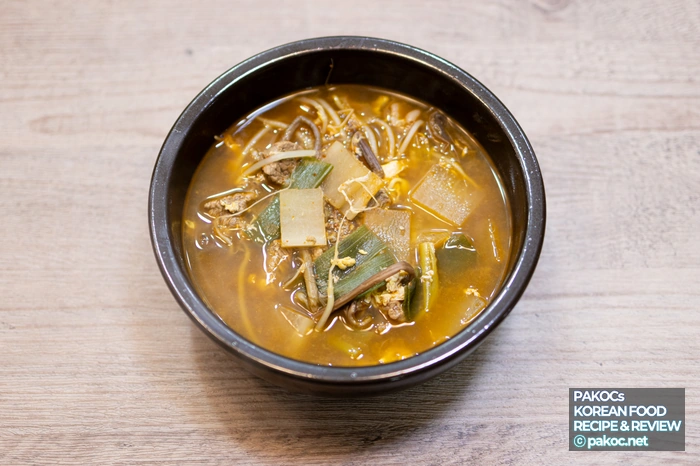
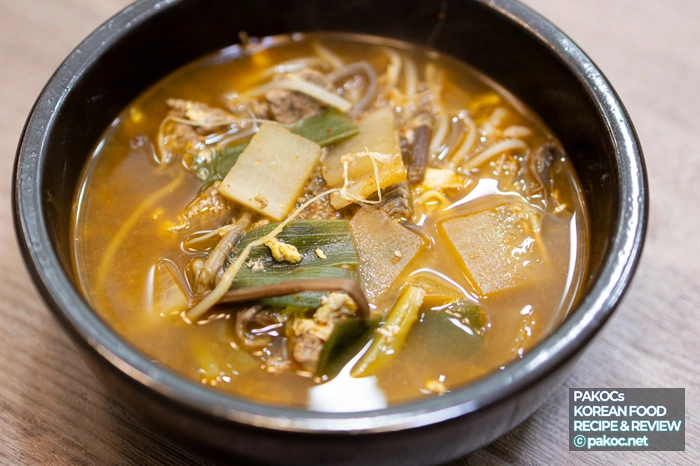
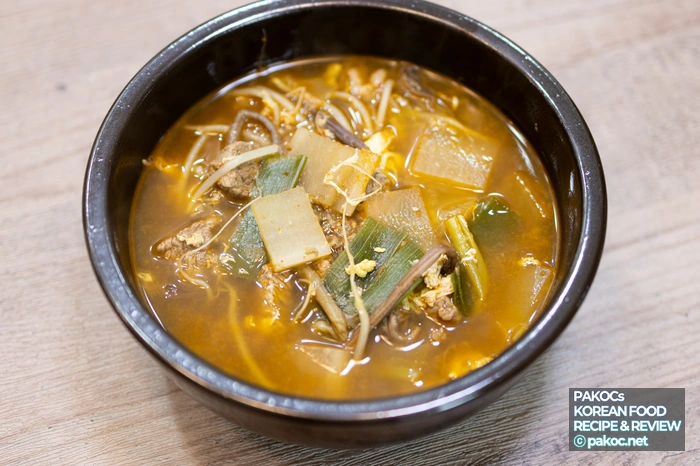
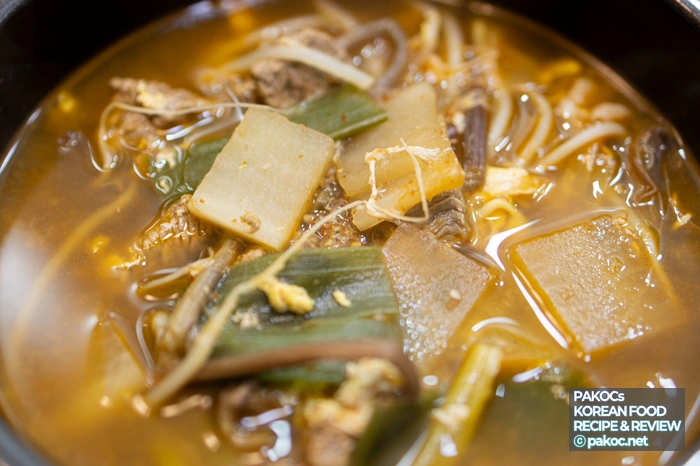
![[Korean Recipe] Spicy Bean Sprout Thinly Sliced Pork Belly Bulgogi 양념장 재료 소개](https://pakoc.net/wp-content/uploads/2025/10/4_양념장-재료-소개-3.webp)
![[Korean Food Recipe] Braised Pork Neck with Green Onion and Soy Sauce 식용유 진간장 맛술 양념 비율](https://pakoc.net/wp-content/uploads/2025/08/6_식용유-진간장-맛술-양념-비율.webp)
![[Korean Cuisine Recipe] Braised Hairtail - An Easy and Convenient Simple Dinner Menu 8_대파-어슷-썰기-준비](https://pakoc.net/wp-content/uploads/2025/09/8_대파-어슷-썰기-준비.webp)
![[K-Recipe] Ugeoji Doenjang Gomtang Hangover Soup 7_들깨가루-국물-조리법](https://pakoc.net/wp-content/uploads/2025/10/7_들깨가루-국물-조리법.webp)